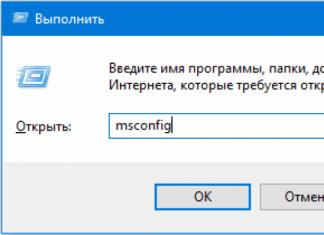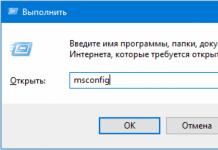You can connect computers to a network in different ways. This can be a local network via cable, or, if there is a router in the room, then through it you can connect computers to a common network. If you don’t have a router, you can connect two laptops via Wi-Fi using their wireless adapters. In this case, it is not necessary to have access to the Internet.
The need for communication between devices arose as technology developed, the amount of information increased, and the areas of use of computer technology expanded. And if, as a rule, you need to purchase a wireless communication module for a desktop computer, then laptops usually have such built-in equipment.
How to connect wirelessly - in our new article
In laptops, the Wi-Fi module is usually combined with Bluetooth, which also allows you to exchange data between them, only at a lower speed, limited distance and with low functionality. Wi-Fi allows you to set up a full-fledged local wireless network.
Connecting laptops using a router
Through a router, you can connect laptops and desktop computers to a common local network, no matter how they are connected to the router - via Wi-Fi or a network cable. In this case, each device will have its own IP address and Internet access, and they will also be able to exchange data with each other. To connect two laptops if you have a router, do the following:

By default, only part of the contents of the local disk is accessible. Full access must be configured manually:
- Right-click on the folder or drive that you want to access from another laptop.
- Go to the "Sharing" menu, then "Advanced sharing settings" if it is a drive. Or in the sub-item “All users (read and write)”, if this is a folder.
- In the case of a disk, select “All users” in the window that opens and check all the permissions boxes.

Thus, it was possible to connect individual computers into a local network and now you can move between laptops and exchange information without restrictions. In addition, both are connected to the Internet. With this method of connecting laptops to each other, some difficulties may arise, for example, connection errors, password requests, etc. Windows is very capricious in the field of security. Please note the following:
- Firewall and antivirus settings - these may be blocking the connection. Disable them completely to make sure they are not the problem.
- Account settings. Try creating accounts on both devices with the same usernames and passwords. Don't use a blank password. And you can also create a Guest entry and assign all permissions to it.
- There are times when problems arise seemingly due to such a trifle as a discrepancy between dates and times on 2 computers. Check this setting just in case.
You can check the connection using the command line:
- To begin, in the “Network Map” window, move the mouse to the laptop icon and a window with its IP address will appear.
- Press WinKey+R, enter cmd, the command line will appear.
- Type the ping command followed by the IP address of the laptop, separated by a space.
- If the packet exchange is successful (a message will be displayed on the command line), then the network is working.

If there are no losses, you did everything right
Connection via wireless module
If you don't have a router and you're out of Wi-Fi range, it's still possible to connect two laptops to a local network. In Windows Vista and higher, there is a special Connection Creation Wizard for this. The computers will communicate via a built-in wireless module, creating a Wi-Fi connection between themselves.
In this case, one laptop needs to be configured to transmit the signal, and the second will receive it. Pay attention to their location; concrete walls and other obstacles create obstacles to broadcasting. To avoid mistakes, place both computers next to each other, configure them, and then experimentally determine how far from each other they can be.
Turn on the Wi-Fi module on both machines and start setting up the first laptop:
- Go to Network and Sharing Control Center. This can be done by clicking on the wireless network icon from the tray in the lower right corner.
- Start setting up a new connection.
- In the connection type, select “Computer-Computer”. Next, the system will explain to you that this is a temporary network for data transfer, and if you are already connected to some network, then the connection may be broken. In addition, the OS will advise you to place computers within 10 meters. But as said earlier, for tuning it is better to place them closer.
- Next, similar to setting up Wi-Fi through a router, you will be asked to come up with an SSID, that is, the name of the network, select the encryption type and come up with a password. One of the most reliable protocols is WPA2, but you may not need to use password protection at all. If there are no other users within range, you can connect your laptop without it. If you are in a public place, it is better to use encryption, otherwise strangers may gain access to your data.
- A window will open to complete the setup process. The network is now saved in the list of possible connections and works as long as all users are in it.
Before connecting a second laptop, you need to change the data access settings. By analogy with how you set up a local network through a router, you need to go to the settings of the folders or required drives and allow all users full access. If desired, of course, you can allow, for example, only viewing files without changing them. You also need to enable network discovery.
Now on the second laptop you need to search for Wi-Fi networks, select the one you need and click “Connect”. You will need to enter a password (the one we created earlier), after which you can enter any files and folders to which access is allowed.
In this way, you can connect as many laptops as you like, not necessarily just one. On the Wi-Fi distributing computer, there will be a message in the tray “Waiting for users to connect,” which indicates that the Computer-to-Computer network is ready to work.
Using the simple steps described, you can quickly transfer files from one device to another without the use of wires, flash drives, removable drives, even while somewhere outside the city without an Internet connection. If you have a router in the room, then it would be more logical to set up a permanent connection of all devices to each other. A full-fledged wireless local network will allow you to work on different computers, edit and move documents, view photos and videos, provide many other opportunities and eliminate the need for repeated rewriting to removable media.
Sometimes there are situations when you need to connect two computers or laptops to each other (for example, if you need to transfer some data or just play with someone in co-op). The easiest and fastest method to do this is to connect via Wi-Fi. In today's article we will look at how to connect two PCs to a network on Windows 8 and newer versions.
In this article we will tell you how to combine two devices into a network using standard system tools. By the way, previously there was special software that made it possible to connect a laptop to a laptop, but over time it became irrelevant and is now quite difficult to find. And why, if everything is very simply done using Windows.
Attention!
A prerequisite for this method of creating a network is the presence of built-in wireless adapters in all connected devices (don't forget to turn them on). Otherwise, following these instructions is useless.
Connection via router
You can create a connection between two laptops using a router. By creating a local network in this way, you can allow access to some data to other devices on the network.
- The first step is to make sure that both devices connected to the network have different names, but the same workgroup. To do this, go to "Properties" systems using RMB on the icon "My computer" or "This computer".

- Find in the column on the left "Advanced system settings".

- Switch to section "Computer name" and, if necessary, change the data by clicking on the appropriate button.

- Now you need to get into "Control Panel". To do this, press the key combination on your keyboard Win+R and enter the command control in the dialog box.

- Find the section here "Network and Internet" and click on it.

- Then go to the window "Network and Sharing Center".

- Now you need to go to additional sharing settings. To do this, click on the appropriate link on the left side of the window.

- Expand the tab here "All networks" and allow general access by checking a special checkbox, and you can also choose whether the connection will be available with a password or freely. If you choose the first option, then only users with an account with a password on your PC will be able to view shared files. After saving the settings, reboot your device.

- And finally, we share access to the contents of your PC. Right-click on a folder or file, then point to the item "General access" or "Grant access" and select who will have access to this information.

Now all PCs connected to the router will be able to see your laptop in the list of devices on the network and view shared files.
Computer-to-computer connection via Wi-Fi
Unlike Windows 7, newer versions of the OS have made the process of creating a wireless connection between multiple laptops more complicated. If previously it was possible to simply set up a network using standard tools designed for this, now you will have to use "Command line". So let's get started:

As you can see, creating a computer-to-computer connection is not difficult at all. Now you can play co-op games with a friend or simply transfer data. We hope we were able to help resolve this issue. If you have any problems, write about them in the comments and we will definitely answer.
USB-to-USB option. You cannot use a simple USB A-A cable to connect two computers via USB. You will need a special USB Smart Link cable, which is equipped with optocoupler isolation and a special controller chip that performs the function of a bridge. Installation and configuration of the driver is carried out automatically; after installing the drivers, the device is immediately ready for use; you only need to install a program - something like a file manager. The USB Link program is usually supplied with a cable and driver. It allows you to transfer files from one computer to another, has a simple interface, which is divided into two windows: your computer and the remote one. In the lower right corner of the program there are two indicators, the green color of which indicates the establishment of a full-duplex connection. When launched, it automatically searches for the USB Smart Link device and tries to detect the remote computer and a similar program running on it. After this, the file systems on all disks of both computers are completely synchronized. The program operates in Hot Swap mode; when a second computer is disconnected and connected, it works automatically. Unfortunately, the supplied driver works stably and can be installed without problems only under the Windows 98 SE operating system, but this “plate” provides high data transfer speeds, as well as ease of setup and connection. Another solution for connecting two computers together is provided by PC-Link USB Bridge Cable Link-100. This is a USB cable with type A connectors on both sides and a thickening in which the board on the Prolific chipset is mounted. The PC-Linq program, a type of Link Commander, is installed along with the driver. The operation and appearance of the program is similar to USB Link, but it has the advantage of supporting Windows XP and Windows 2000 operating systems.
The speed of data exchange between computers significantly exceeds the connection speed through a serial and even parallel port and is comparable to the speed of a local network at 10 Mbit/s. The problems of regular transfer of both small and large volumes of files, for example, between a laptop and a desktop computer, are successfully solved. Of course, such a set of useful functions may seem insufficient. But what about support for computer games, shared network resources and access for all users to one Internet channel? All this becomes possible with the help of another device - the Link-200 model. It will allow you to organize a peer-to-peer network based on USB communication, to which you can connect up to 16 computers. Link-200 uses a controller and drivers from AnchorChips. The device is a small translucent box with a USB A cable integrated into it. On the other side of the box is equipped with a USB type B connector. The kit includes an A-B cable and a floppy disk with drivers. To build the network, a star topology is used. One computer acts as the master, and the rest are under its control. This is due to the fact that the EZ-Link-based network has its own internal structure of its own digital names and connects to the regular network through drivers, which are bridges. It is possible to share printers and other peripherals, just like in a regular local network. You can also use this cable to connect your laptop to your corporate network. To do this, you will need a computer that is already connected to the network and has a free USB port. In this configuration, the desktop computer will act as a gateway between the corporate and USB networks.
As usual with USB devices, installation is very simple. The auto-installer will install the necessary drivers and EZ-Link manager software. If a network has not been installed on your computer before, then you will have to enter the name of the computer under which it will be visible on the network. After installing the drivers, you need to restart the computer and only then connect the Link 200 to a free port. In the Link 200 driver settings, in the Advanced section, you can change the unique number of the computer under which it is visible in a USB network based on Link 200. EZ-Link manager will start every time the computer boots. If the computer is not connected to the network, the icon will be gray, and after connecting the Link 200 cable to the USB ports of two computers, it will automatically detect the presence of a connection, activate the network connection, and the icon will change color to blue. Working with a network based on Link 200 adapters is completely identical to working with a regular network: you can connect network drives and other network resources, run network games via the TCP/IP or IPX protocol. Thus, Link 200 makes it possible to create a fully functional network at minimal cost. Installing and configuring drivers is very simple. At a relatively low price for a kit for connecting two machines, Link 200 creates serious competition for conventional network cards. Unfortunately, this solution currently only works under Windows 98/95, but manufacturers promise to release drivers for Windows 2000 as well.
Another device, USBNet, allows you to connect two computers, building a network without installing network cards. Minimum requirements for computers are Windows 98 and USB. When using USBNet, computers on the network are able to share files, programs and peripheral equipment: floppy and hard disk drives, CD-ROMs, printers, scanners, modems. USBNet is the ideal solution for small offices, online gaming and small home networks. The number of users in such a network can reach 17. Data transfer speeds are up to 5 Mb/sec. A special USB connection protocol is installed, and there is support for TCP/IP and other network protocols. The device is installed as a local network adapter.
USB Smart link allows you to connect not only PC and PC, but also PC/Mac, Mac/Mac for work. When connecting via USBLink, it is enough to install the device driver on both computers and the USB Bridge cable program. Using this program, you can transfer files and folders from one computer to another in much the same way as in any file manager. But copying files can only be done in one direction - it won’t work at the same time. By the way, USBNet does not have this drawback. The device driver, all necessary network protocols and access services are installed automatically. Specific protocols, most often called USB-USB Bridge net, need to be installed only on an external computer that has a connection to the local network, and the installation will happen automatically - you just need to agree with the request: yes or no. The disadvantage of USBNet is the low pumping speed: with the stated 5 Mbit/s, 3 Mbit/s is most often obtained. But this is compensated by the ability to access not only files, but also applications of a second computer, as well as the use of a printer, scanner and other peripheral devices over the network. Differences in operating systems and processors of the connected computers do not affect their operation.
In today's article we will consider a situation where we need to connect a laptop and a PC for an equivalent exchange of information. In principle, a laptop is the same computer, so we will just need to create a network between two computers, but more on that a little later.
First, I would like to say that a laptop is not a flash drive and you can’t just plug it into a USB connector; we’ll have to make a full-fledged network. So let's get started.
Connecting two devices
The first thing you will need is an Internet cable (twisted pair) crimped on both sides; it looks like this:
Now we find the network card connector on the back of the computer:

And a similar connector on the back of the laptop:

We connect the two network cards to each other with a cable and go to the settings of the Windows operating system.
OS setup
In order to connect a laptop to a computer correctly, you need to ensure that these devices there were different names, different IP addresses and one workgroup.
In order to change the name of the computer and workgroup, go to “Start” and right-click on “Computer”, from the drop-down menu select “Properties”

In the window that opens on the left, select the item "Advanced system settings":

In the window that opens, in the tab "Computer name" click on the “Change” button:

If necessary, change the name of the computer and workgroup:

Now let's look at IP addresses and other network settings. Everything that I will describe will need to be done both on a computer and on a laptop.
Right-click on the network status icon (near the clock) and select .


We look for our local network connection and right-click on it, select “Properties”.

Looking for a component in the list "Internet Protocol Version 4", select it and click on the “Properties” button

We put the switch in position "Use the following IP address" and enter the IP address – 192.168.1.2, and the subnet mask 255.255.255.0. This is what we enter for the computer:

For a laptop, we simply set a slightly different address: 192.168.1.3, the subnet mask remains the same:

Checking the created connection
In theory, after these settings, the connection between the computer and laptop should be established. Let's check if this is true and ping the network. To do this, press the Win+R key combination on your PC and write the command cmd in the window that opens.

In the command line, enter the command ping 192.168.1.3 (the IP address of the laptop that we specified above). If there is no packet loss and you get normal responses, then everything is fine:

If there is packet loss, then there is no connection, and you will have to disable Windows Firewall or another firewall that you have installed.
We also go to "Network and Sharing Center" and in the left column click on the item "Change advanced sharing settings"

There in the section "Home or Work" enable all parameters as shown in the screenshot:

We also disable password protected sharing. If you do not do this, then you will not be able to connect your computer to a laptop that has accounts with passwords on the Windows operating system (How to set a password on Windows 7).

Create shared access
Once you've done all this, you can't just drag and drop information from your laptop to your computer and vice versa. To do this, you need to open shared access to hard drive partitions or individual folders.
To hard drive partition
To open access to a hard drive partition, you need to right-click on it and select the item from the drop-down list "Sharing - Advanced settings...":

In the “Access” tab, click on the button "Advanced setup..."

We put a bird near the point "Share this folder". If you want full access to this disk from another computer with the ability to change information, you can additionally click on the “Permissions” button and check the box next to “Full access”. And in the main window, click on the “Apply” button and click “OK”.

Let's see, now the icon of our section has changed slightly, two people have appeared next to it. This means that public access is open.

To folder
To share a folder, right-click on it and select "Shared Access - Specific Users":

Add all users and click on the “Sharing” button. If you want information to be able to be changed in this folder from another computer, then we give all users the rights "Read and Write".

We are given a message that the folder is open for public access:

We do all the manipulations described above both on a computer and on a laptop (I will repeat).
Login from one device to another
Everything is set up, now all that remains is to figure out how to get from the laptop to the computer and vice versa. To do this, go to Explorer and look for the “Network” item in the right corner, or simply write in Explorer the IP address of the computer to which we want to connect as follows: 192.168.1.2. If everything is in order, then we should see the folders and drives we have shared:

If you forgot to disable password protected sharing, you will see the following window:

In this case, either create a password for the user or disable password-protected sharing.
That's all, I explained all the main nuances of how to connect a laptop to a computer via a cable.
And also watch a video on the topic:
Rate this article:
(1
ratings, average: 5,00
out of 5)
Webmaster. Higher education with a degree in Information Security. Author of most articles and computer literacy lessons


























